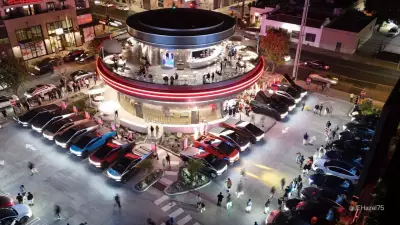
Have you ever noticed your phone or laptop screen turning a warm yellow hue during late hours? That comforting glow isn't just for aesthetics—it's a scientifically designed feature to make your nighttime device usage more comfortable and potentially improve your sleep quality.
What Are These Yellow Tint Features?
Across different device ecosystems, you'll find various implementations of blue light reduction technology. Apple devices feature Night Shift on both iPhones and Macs, which automatically adjusts your display's color temperature to warmer tones after sunset. Windows laptop users can access similar functionality through Night Light, while Android smartphones typically label this feature as Blue Light Filter or Eye Comfort Mode.
Even dedicated e-readers like the Kindle Paperwhite have adopted this approach with their Warm Light mode for comfortable nighttime reading sessions. These features are easily accessible through display settings or quick settings panels on most modern devices from popular brands including Samsung, OnePlus, and Xiaomi.
The Science Behind Blue Light Reduction
The primary purpose of these yellow filters is to reduce the amount of blue light emitted from screens. Blue light is a short wavelength visible light that research has linked to suppressed melatonin production—the hormone responsible for regulating our sleep-wake cycles.
Excessive exposure to blue light during evening hours can potentially delay sleep onset and cause eye discomfort, particularly when using devices in dimly lit environments. By shifting the color spectrum toward warmer tones, these filters minimize the harsher blue wavelengths that are most disruptive to our natural rhythms.
Practical Benefits and Considerations
For the average user, activating blue light filters in the evening can make digital devices feel significantly less taxing on the eyes. The warmer color temperature softens sharp whites and cools down bright blues, making text and images more comfortable to view for extended periods.
Most regular users report experiencing less eye dryness and irritation when reading, working, or watching videos during late hours with these filters enabled. However, it's important to note that these features do impact color accuracy, which means designers, photographers, and video editors might need to disable them when working with color-critical tasks.
Modern implementations typically offer adjustable intensity controls, allowing users to find the perfect balance between comfort and color representation. The scheduling features on most devices mean you don't have to remember to toggle these settings manually—they can be set to activate automatically during your preferred evening hours.
While blue light filters are valuable tools for comfort and sleep hygiene, they're not medical solutions or substitutes for managing overall screen time. For households with heavy device usage or children studying late, these features provide an additional layer of protection against digital eye strain.
The widespread adoption of yellow tint filters across smartphones, laptops, and tablets demonstrates their recognized value in our increasingly digital lifestyles. As we continue to rely on screens for work, entertainment, and communication well past sunset, having flexible blue light reduction options has become an essential consideration when choosing new devices.





